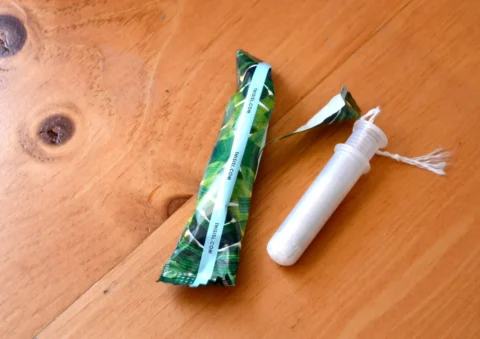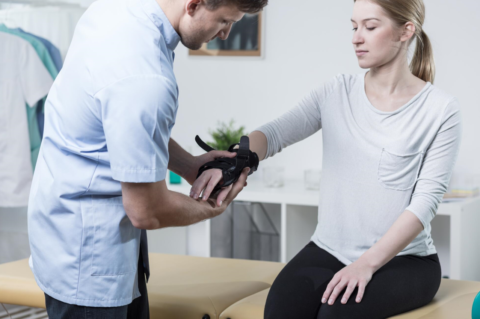Emergencies happen when we least expect them. Whether it’s a loved one collapsing at home or a coworker choking in a restaurant, knowing how to respond effectively can make all the difference. To be prepared for emergencies, signing up for a BLS certification online should be your first step.
Basic Life Support is a set of essential skills designed to provide immediate care to someone experiencing a life-threatening emergency. Unlike advanced medical procedures, BLS can be performed by anyone. But you will need proper training, to make it an invaluable skill for the general public. In this blog, we’ll explore the critical actions you can take in common emergency situations using BLS techniques.
Common Emergency Situations & BLS Response
Knowing Basic Life Support skills in emergencies can make life changing differences. Basic Life Support (BLS) equips you with the skills and confidence to handle a variety of urgent scenarios effectively. It provides a structured approach to saving lives. Let’s walk through the appropriate BLS responses to common emergency situations:
Cardiac Arrest
- Check for responsiveness: Tap and shout to see if the person responds.
- Call for help: Dial emergency services and get an AED if available.
- Start chest compressions: Push hard and fast in the center of the chest at a rate of 100-120 compressions per minute.
- Give rescue breaths: After 30 compressions, give 2 breaths, ensuring the chest rises.
- Use an AED: Follow the device instructions as soon as it arrives.
Choking
- Assess the severity: If the person can cough or speak, encourage them to keep coughing.
- Perform the Heimlich maneuver: Stand behind the person, wrap your arms around their waist, and perform abdominal thrusts.
- Use back blows for infants: For children under one year, alternate between 5 back blows and 5 chest thrusts.
Unconscious but Breathing
- Place in recovery position: Roll the person onto their side to keep the airway clear and open.
- Monitor breathing: Ensure they continue to breathe normally and watch for any changes.
- Stay with them: Remain by their side until professional help arrives.
Severe Bleeding
- Apply pressure: Use a clean cloth or bandage to apply firm pressure to the wound.
- Elevate the injury: Raise the affected area above heart level if possible.
- Seek medical help: Call emergency services for further assistance.
Stroke
- Recognize symptoms: Look for signs such as facial drooping, arm weakness, and speech difficulties (FAST: Face, Arms, Speech, Time).
- Call emergency services: Seek immediate medical help.
- Keep the person calm and comfortable: Ensure they are in a safe position and reassure them until help arrives.
Drowning
- Remove from water: Safely pull the person out of the water.
- Check for breathing: If they are not breathing, start rescue breaths.
- Perform CPR: If there is no pulse, begin chest compressions and continue until help arrives or they start breathing.
Special BLS Considerations for Different Age Groups
The principles of BLS mostly stay the same for all age groups, but there are differences in techniques. Understanding these differences ensure effective care tailored to specific needs. Below are the special considerations for each age group:
BLS for Adults
- Chest Compressions:
- Hand Placement: Place the heel of one hand on the center of the chest (on the lower half of the sternum) and the other hand on top, interlocking fingers.
- Compression Depth and Rate: Push down hard and fast, at least 2 inches deep at a rate of 100-120 compressions per minute.
- Allow Full Recoil: Ensure the chest fully recoils between compressions to allow the heart to refill with blood.
- Rescue Breaths:
- Head Tilt-Chin Lift: Open the airway using the head tilt-chin lift method.
- Breath Delivery: Give 2 breaths, each lasting about 1 second, watching for the chest to rise.
- Automated External Defibrillator (AED):
- Pad Placement: Follow the AEDs instructions for pad placement; typically, one pad is placed on the upper right chest and the other on the lower left side.
BLS for Children (Ages 1-8)
- Chest Compressions:
- Hand Placement: Use one hand or both hands (depending on the size of the child) on the center of the chest.
- Compression Depth and Rate: Compress the chest about 2 inches deep at a rate of 100-120 compressions per minute.
- Allow Full Recoil: Ensure complete chest recoil between compressions.
- Rescue Breaths:
- Head Tilt-Chin Lift: Open the airway using the head tilt-chin lift method.
- Breath Delivery: Give 2 breaths, each lasting about 1 second, ensuring the chest rises visibly.
- Automated External Defibrillator (AED):
- Pediatric Pads: If available, use pediatric AED pads. If not, use adult pads ensuring they do not touch each other.
- Pad Placement: Follow the AEDs instructions for pad placement.
BLS for Infants (Under 1 Year)
- Chest Compressions:
- Finger Placement: Use two fingers in the center of the chest just below the nipple line.
- Compression Depth and Rate: Compress the chest about 1.5 inches deep at a rate of 100-120 compressions per minute.
- Allow Full Recoil: Ensure complete chest recoil between compressions.
- Rescue Breaths:
- Head Tilt-Chin Lift: Open the airway using a gentle head tilt-chin lift method (be careful not to overextend the neck).
- Breath Delivery: Give 2 gentle breaths, each lasting about 1 second, watching for the chest to rise.
- Automated External Defibrillator (AED):
- Pediatric Pads: Use pediatric AED pads. If unavailable, use adult pads with careful placement.
- Pad Placement: Place one pad on the front of the chest and the other on the back, ensuring they do not overlap.
General Tips for All Age Groups
- Safety First: Always ensure the scene is safe before providing care.
- Call for Help: Dial emergency services immediately and, if possible, get an AED.
- Continuous Assessment: Regularly check for responsiveness and normal breathing. Adjust care as needed based on the person’s condition.
- Confidence and Calmness: Stay as calm as possible and perform each step methodically to provide the best care.
Conclusion
BLS certification online is a great way to master the skills that can help you determine someone’s fate. Whether it’s performing chest compression or the Heimlich Maneuver, Basic Life Support techniques are simple yet powerful tools that can help you make a significant difference. We encourage you to seek out BLS training to build your confidence and competence in lifesaving techniques. In doing so, you’ll not only be prepared to help those around you but also contribute to a safer, more responsive community. Stay informed, stay trained, and be ready to make a difference when it matters most.





